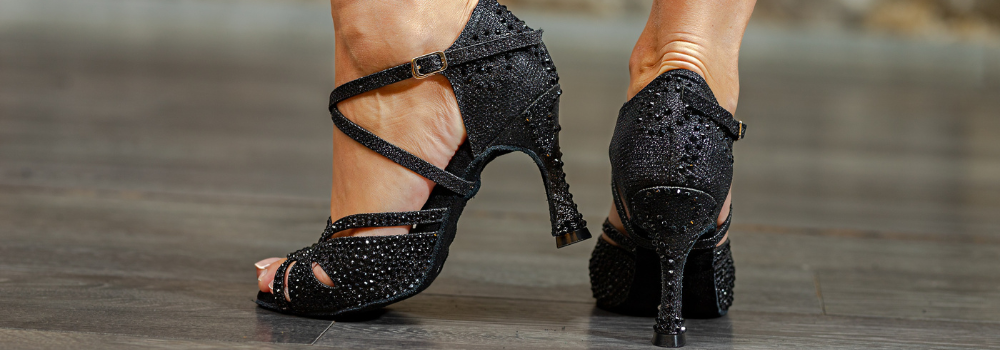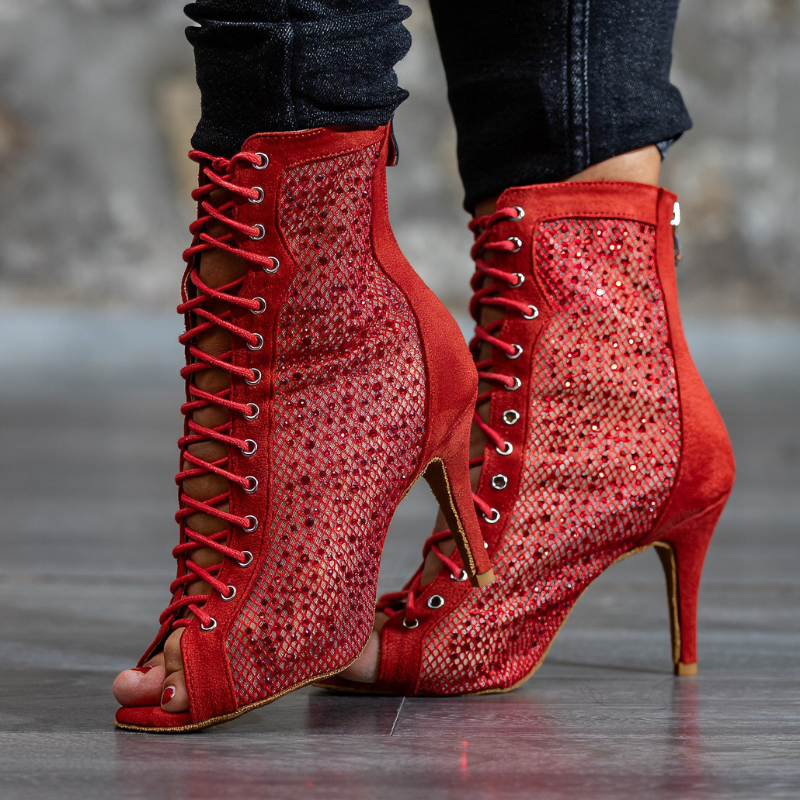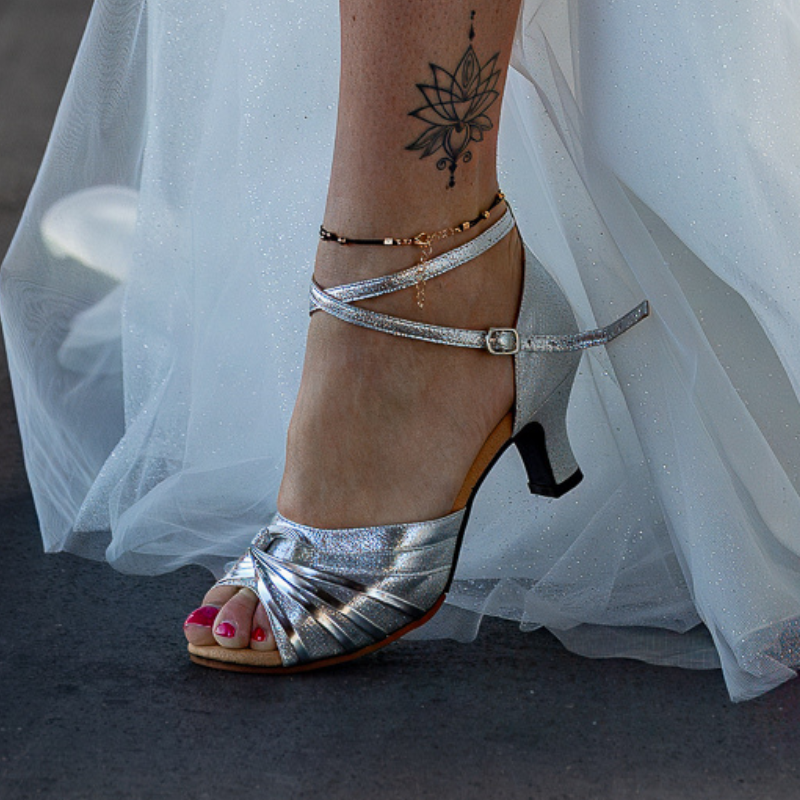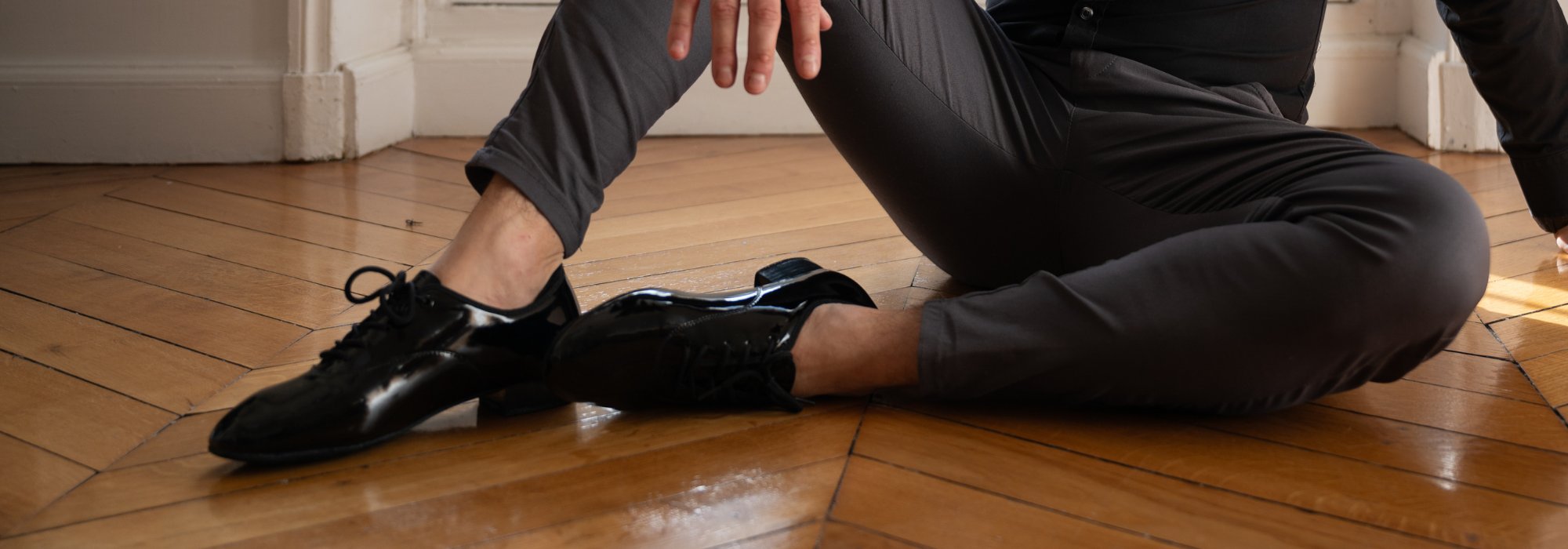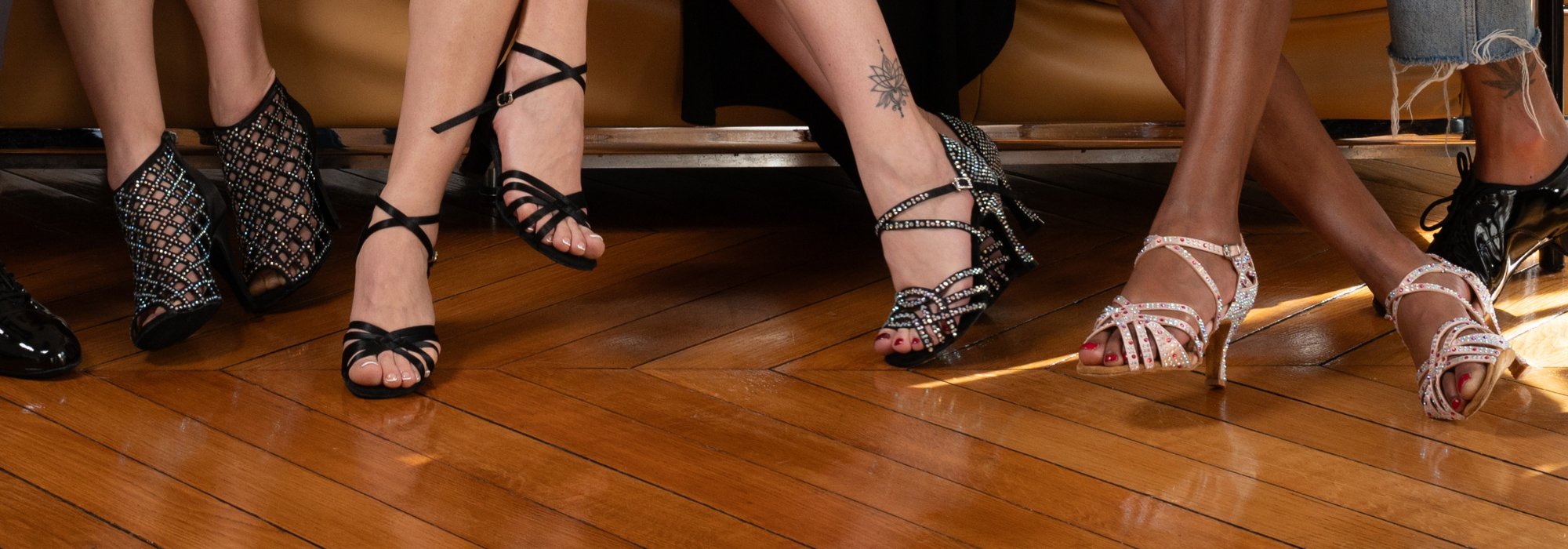New Article
Why do tango dancers invest in several pairs of shoes?
Investing in quality tango shoes is not just a fanatic’s whim: it is the key to a fulfilling, fluid… and lasting dance experience! Many experienced dancers quickly understood this issue and chose to invest in several pairs of tango shoes, each for specific reasons that combine performance, style and comfort. If you wonder why this choice is so common among amateurs and professionals, this article will open the doors to a world where specialization takes precedence, where every detail counts to master the track. Follow me on this editorial tango where each step will show you the importance of fulfilling your ambitions.
Sustainability: preserving your shoes means preserving your pleasure of dancing
Alternate to extend the life of each pair
Wearing the same pair of tango shoes every time you practice or milonga runs the risk of wearing them out prematurely. The alternation lets each pair breathe, return to its initial shape, and naturally dries perspiration. This prevents deformation and cracking and always gives your feet an optimal experience, even after hours of dancing.
- Alternate between leather pairs and suede pairs depending on the occasion
- Let each pair rest for at least 24 hours between two uses to ventilate the insole
- Use shoe trees or newspaper to keep the shape
Prevent wear and avoid accidents
A worn shoe can slip, lack support, or cause blisters and injuries. By diversifying the pairs, you reduce intensive wear on a single pair and optimize your safety on the track. This way, your tango shoe investment remains profitable in the long term, because each model lasts longer.
- Replace worn heel pads before they damage the structure
- Monitor the condition of the soles depending on the dance surface
Adapt your performance to different styles of tango
Specialized shoes for every style
Tango is a plural art: tango salón, escenario, nuevo… Each style calls for an energy, an anchor, and therefore a different shoe. A higher heel accentuates posture and elegance for tango salón, while a more stable model can help you perform more dynamic tango nuevo figures.
- Choose thinner heels for the finesse of classic milongas
- Prefer a more flexible sole for improvisation of tango nuevo
Adjust according to level and ambitions
A beginner dancer will often favor stability and comfort, while an advanced dancer will seek lightness and precision. Investing in several pairs of tango shoes allows you to evolve and adapt to your progress... A bit like going on a trip with several outfits, ready to shine depending on the occasion!
- Avoid locking yourself into a single model too early
- Listen to your feet on the track to adjust the choice of shoes
Comfort: dancing for a long time also means knowing how to take care of your feet
Change pairs to avoid muscle fatigue
Tango requires a subtle balance between tension and relaxation. Always wearing the same shoes risks using the same muscles and tiring certain areas. Varying the height of the heels or the width of the seat redistributes the effort, limits the appearance of pain and prolongs your endurance throughout the evening.
- Alternate between 6cm heel for rehearsals and 8cm for the gala
- Have at least one ultra comfortable pair for intensive workshops
Maintain the health of your feet and joints
Seasoned dancers know how a blister or plantar pain can compromise weeks of training. Several pairs, adapted to the body shape and the needs of the moment, prevent these little ailments which slow down passion.
- Opt for models with good cushioning for marathons
- Avoid shoes that are too tight or already deformed by excessive wear
Style: express your personality on each tempo
Vary colors, materials and designs
When tango becomes a spectacle, every detail counts. Contrary to popular belief, choosing several pairs is not a frivolous luxury. It’s a way to express your personality, to harmonize your outfit with your shoes, to play with the light of the spotlight or the sobriety of an intimate milonga. Your presence on the track begins with your gaze... which often goes down to your feet.
- Coordinate your shoes with your outfits or accessories
- Dare to use bright colors for theme evenings
- Choosing Glittering Models for Demonstrations
Refine your identity as a dancer
Like a painter with his palette of colors, a mature dancer likes to have several options to adapt to the mood and context. Style becomes language, and shoes, one of its most beautiful accents.
- Alternate classic and contemporary looks
- Try new products from specialized craftsmen (find our tango shoe collection)
Dance surface: adapt to the terrain before shining
Different soles for different tracks
The track of a theater, a school or a popular milonga does not have the same hook, nor the same softness. Regulars often have shoes with different soles (leather, suede, suede) to adapt and avoid unpleasant surprises at the first time!
- Using suede for slippery traditional parquet floors
- Choose leather for rough floors
- Avoid synthetic soles, which are often too rigid
Have a “backup pair” for the unexpected
A change of room, an unexpected track or variable weather conditions... Organized dancers always have a second pair in their bag, just in case. This can “save the evening” and prevent you from dancing awkwardly.
The importance of specialization: every moment has its shoe
Training shoes vs. show shoes
Your training shoes must forgive hours of repetition, absorb shock, and withstand numerous movements. Show shoes, for their part, rely on elegance, shine and finesse to impress the public.
- Invest in a pair suitable for intensive repetitions
- Keep a “new” pair for parties or competitions
Shoes for improvisation, shoes for precision
Some models are perfect for freedom of movement and improvisation, thanks to their great flexibility. Others, more rigid or structured, promote stability for complex figures. Knowing how to recognize these nuances allows you to maximize your pleasure and avoid routine.
Pleasure and motivation renewed with each pair
Awaken the desire to dance
Changing your shoes is sometimes enough to find the spark again! The touch of new leather, the delicacy of a well-designed heel, the magic of an unexpected color... All of this influences your emotions and revives your desire to embrace music. Some dancers speak of a “little molt” with each shoe put on.
- Organize in advance: which pair for which evening?
- Make buying a new pair a little motivating ritual
Find “your” favorite shoe… then let curiosity guide you
Many dancers invest in several pairs simply to explore, try, test. Sometimes, a new cut, a refined sole is enough to transform your feelings... and to find the pair that will never leave you.
- Participate in shoe testing events or workshops (see our discovery workshops)
A smart investment to progress in tango
Better manage wear and tear and the budget in the long term
Buying several pairs of tango shoes may seem expensive in the short term, but it will save you money over time. Each pair lasts longer, repairs are rarer, and “panic” purchases are avoided. This is the winning strategy of many professionals.
- Plan an annual budget to renew a pair according to use
- Save old pairs for outdoor rehearsals
Avoid unnecessary expenses through informed selection
Investing in tango shoes does not mean accumulating at random, but choosing with discernment. Each must respond to a specific use, need, or desire. Remember to consult feedback, compare models, and ask advice from your teachers or specialist salespeople to refine your selection.
- Try before you buy, whenever possible
- Adapt your selection to the evolution of your practice
FAQ - Frequently asked questions
Why is it recommended to have several pairs of tango shoes?
Having several pairs allows you to adapt your shoes to different styles, surfaces, and intensity levels. This preserves the durability of each model while providing long-term comfort and safety.
How do I choose my pairs of shoes based on my level?
To start, promote stability and a low heel. With experience, don't hesitate to invest in more technical or specialized pairs to refine your connection to the ground and your personal style.
What materials should you choose for the sole depending on the dance surface?
Suede is ideal for slippery floors while leather offers more grip on rough surfaces. Avoid too rigid soles which lack flexibility for tango.
How long does a pair of tango shoes last on average?
It all depends on your frequency of practice. By alternating several pairs and with good maintenance, a pair can last many months, sometimes more than a year, without loss of performance.
Can you have your tango shoes maintained or repaired?
Yes! Many specialized shoemakers or dance boutiques offer heel replacement, leather repair or even resoling. This is a good way to optimize your tango shoe investment.
Is it useful to have a “show special” pair separate from the daily pair?
Yes, because a show pair keeps its luster, its shine and is not worn out by training. It will also give you extra confidence and elegance on stage.
How to maintain your pairs to maximize their durability?
Let them breathe after each use, use shoe trees, be sure to gently brush the soles according to their material, and store them away from humidity and the sun.
Discover our models of investing tango shoes available on our SalsaNueva online store Shop, designed for demanding dancers.

